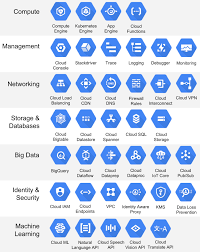Exploring the Boundless Realm of Innovation in Technology
The Power of Innovation in Technology
Technology has always been at the forefront of innovation, driving progress and shaping the future. In today’s fast-paced world, the pace of technological advancement is accelerating at an unprecedented rate, revolutionizing industries and transforming the way we live and work.
One of the key drivers of this transformation is innovation. Innovation in technology is not just about creating new gadgets or software; it’s about pushing boundaries, solving complex problems, and improving efficiency and effectiveness in all aspects of life.
The Impact of Innovation in Tech
From artificial intelligence and machine learning to blockchain and quantum computing, innovative technologies are reshaping industries across the globe. Companies that embrace innovation are gaining a competitive edge, driving growth, and fostering a culture of creativity and forward thinking.
Innovation in technology is also playing a crucial role in addressing some of the world’s most pressing challenges, from climate change and healthcare to education and cybersecurity. By harnessing the power of innovation, we can develop sustainable solutions that have a positive impact on society as a whole.
The Future of Innovation in Tech
As we look to the future, the possibilities for innovation in technology are limitless. Emerging technologies such as Internet of Things (IoT), 5G connectivity, and augmented reality are set to revolutionize how we interact with the world around us.
However, with great power comes great responsibility. It’s essential that we approach innovation in technology with a mindset that prioritizes ethics, inclusivity, and sustainability. By doing so, we can ensure that technological progress benefits everyone and creates a more equitable and prosperous future for all.
In conclusion,
Innovation in technology is a powerful force that has the potential to shape our world for the better. By embracing creativity, collaboration, and cutting-edge ideas, we can unlock new opportunities, drive positive change, and build a brighter tomorrow for generations to come.
Exploring Innovation in Technology: Key Questions and Insights
- What is innovation in technology?
- How does innovation drive technological advancement?
- What are some examples of innovative technologies?
- Why is innovation important in the tech industry?
- How can companies foster a culture of innovation in technology?
- What role does research and development play in technological innovation?
- What are the challenges faced by innovators in the tech sector?
- How does innovation in technology impact society and the economy?
- What ethical considerations are associated with technological innovation?
What is innovation in technology?
Innovation in technology refers to the process of introducing new ideas, methods, or products that bring about significant advancements and improvements in the tech industry. It involves the creation and implementation of novel solutions to address existing challenges or meet evolving needs. Innovation in technology is not limited to just inventing new devices or software; it also encompasses reimagining processes, enhancing user experiences, and driving efficiency through creative problem-solving. Ultimately, innovation in technology drives progress, fosters growth, and shapes the future of how we interact with and benefit from technological advancements.
How does innovation drive technological advancement?
Innovation serves as the catalyst for driving technological advancement by sparking new ideas, pushing boundaries, and challenging the status quo. Through innovation, individuals and organizations are motivated to explore uncharted territories, experiment with novel concepts, and develop groundbreaking solutions that address existing challenges or create entirely new opportunities. By fostering a culture of innovation, technology evolves rapidly as creative minds collaborate, iterate on previous discoveries, and leverage emerging trends to propel progress forward. Ultimately, innovation fuels the engine of technological advancement by inspiring continuous improvement, fostering resilience in the face of change, and shaping a future where possibilities are endless.
What are some examples of innovative technologies?
Innovation in technology has led to the development of numerous groundbreaking technologies that have transformed industries and revolutionized the way we live and work. Some notable examples of innovative technologies include artificial intelligence (AI) systems that can perform complex tasks and make intelligent decisions, virtual reality (VR) and augmented reality (AR) technologies that create immersive digital experiences, blockchain technology that enables secure and transparent transactions, and autonomous vehicles that are reshaping the future of transportation. These innovative technologies showcase the incredible potential of human creativity and ingenuity in driving progress and shaping the world around us.
Why is innovation important in the tech industry?
Innovation is crucial in the tech industry for several reasons. Firstly, it drives progress and propels advancements in technology, leading to the development of new products and services that enhance efficiency, productivity, and user experience. Secondly, innovation fosters competition among companies, encouraging them to constantly improve and differentiate themselves in the market. Additionally, by embracing innovation, the tech industry can address complex challenges more effectively, such as cybersecurity threats, sustainability issues, and societal needs. Overall, innovation is essential in the tech industry to stay relevant, meet evolving demands, and shape a future where technology positively impacts society.
How can companies foster a culture of innovation in technology?
To foster a culture of innovation in technology, companies must prioritize creating an environment that encourages creativity, experimentation, and continuous learning. It starts with leadership setting a clear vision and providing resources for research and development. Encouraging open communication, collaboration among teams, and celebrating both successes and failures as learning opportunities are key aspects. Companies should also empower employees to take risks, think outside the box, and explore new ideas without fear of failure. By investing in employee training, promoting diversity of thought, and embracing a growth mindset, organizations can cultivate a culture where innovation thrives and drives sustainable growth in the ever-evolving tech landscape.
What role does research and development play in technological innovation?
Research and development (R&D) plays a crucial role in technological innovation by serving as the driving force behind the creation of new products, services, and solutions. Through R&D efforts, companies and organizations invest resources in exploring new technologies, experimenting with novel ideas, and pushing the boundaries of what is possible. Research helps identify gaps in the market, understand consumer needs, and anticipate future trends, while development translates these insights into tangible innovations that can revolutionize industries and improve quality of life. Ultimately, R&D fuels continuous progress in technology by fostering a culture of curiosity, discovery, and invention that leads to groundbreaking advancements and transformative change.
What are the challenges faced by innovators in the tech sector?
In the rapidly evolving tech sector, innovators face a myriad of challenges that can impact the success and adoption of their groundbreaking ideas. One key challenge is staying ahead of the curve in a highly competitive landscape where new technologies emerge at an unprecedented pace. Additionally, securing funding and resources to bring innovative concepts to fruition can be a significant hurdle for many innovators. Furthermore, navigating complex regulatory frameworks and ensuring compliance with data privacy and security regulations pose additional obstacles. Despite these challenges, tech innovators continue to push boundaries, overcome obstacles, and drive progress through their relentless pursuit of innovation.
How does innovation in technology impact society and the economy?
Innovation in technology has a profound impact on society and the economy by driving progress, creating new opportunities, and enhancing efficiency. Technological advancements lead to the development of new products and services that improve people’s lives, increase productivity, and streamline processes. This, in turn, stimulates economic growth, fosters job creation, and fuels industries. Additionally, innovation in technology can address societal challenges such as healthcare access, education quality, and environmental sustainability. By embracing innovation, societies can become more interconnected, resilient, and adaptable to change, ultimately shaping a more prosperous future for all.
What ethical considerations are associated with technological innovation?
Ethical considerations play a crucial role in the realm of technological innovation. As advancements in technology continue to push boundaries and redefine what is possible, it becomes imperative to address the ethical implications of these innovations. Issues such as data privacy, algorithmic bias, job displacement due to automation, and the impact on the environment are just a few examples of ethical considerations that must be carefully navigated. It is essential for individuals, organizations, and policymakers to actively engage in discussions surrounding these ethical dilemmas to ensure that technological progress is aligned with values of fairness, transparency, and accountability. By proactively addressing these ethical considerations, we can harness the full potential of technological innovation while safeguarding the well-being of society as a whole.











